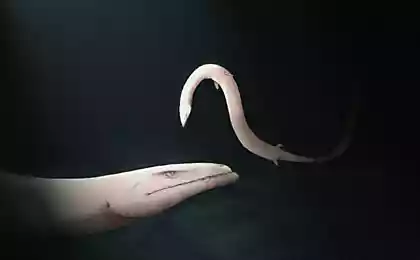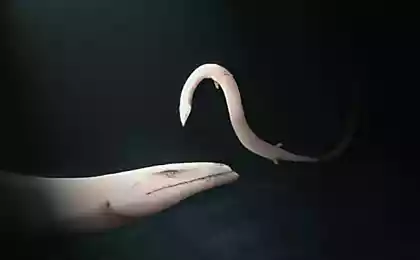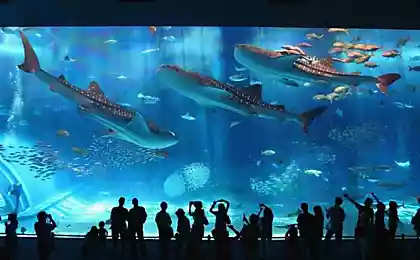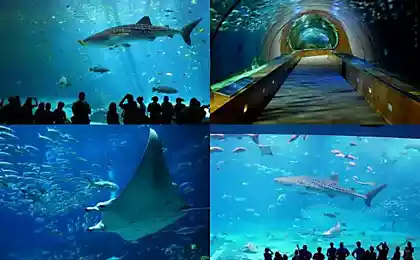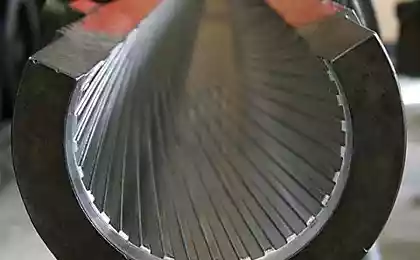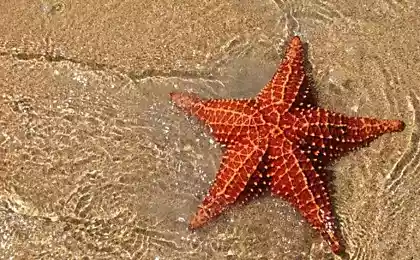941
About marine creatures
A small selection of facts.
20 photos + text
1. lobsters do feel pain when they are thrown into boiling water. However, plunging them before cooking in salt water, you can give them anesthesia.

2. Starfish - the only animal that can turn your stomach inside out. When it approaches its prey (usually representatives of mollusks), the star of the stomach protrudes through the mouth and covering his victim's shell. Then slowly digests the fleshy part of his body outside the mollusk.
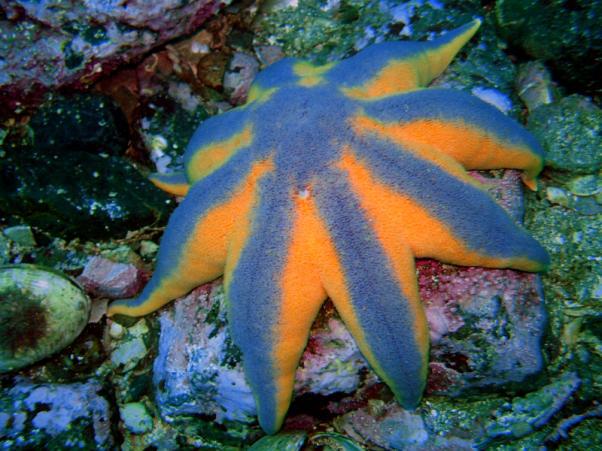
3. Newborn barnacle Balanus (barnacle) similar to the daphnia (water fleas). It is also called barnacles and sea tulip. In the next stage of development, it has three eyes and twelve feet. In the third stage of development, it has twenty-four feet and has an eye. Barnacles attach themselves to a solid object and remain there for life.
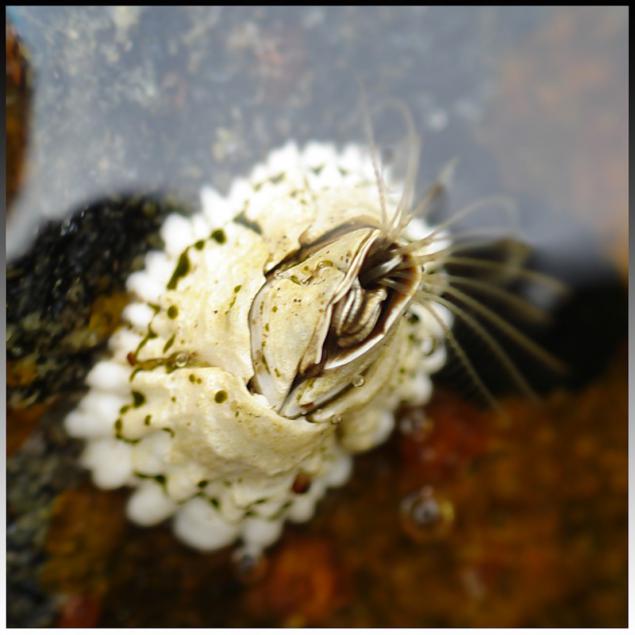
4. When the shellfish abalone feed on red algae, their shell becomes red.
Abalone 10 cm in length may be so hard to hold on to a stone that two strong men can not tear it.

5. Sea worms mate as follows: in the mating season males and females gather in a swarm. Suddenly they attack the females and the males bite their tails. The tailings contain sperm. If swallowed, it moves through the digestive tract and fertilize the female egg.

6. snails mate only once in their lifetime. Mating can last up to twelve hours.
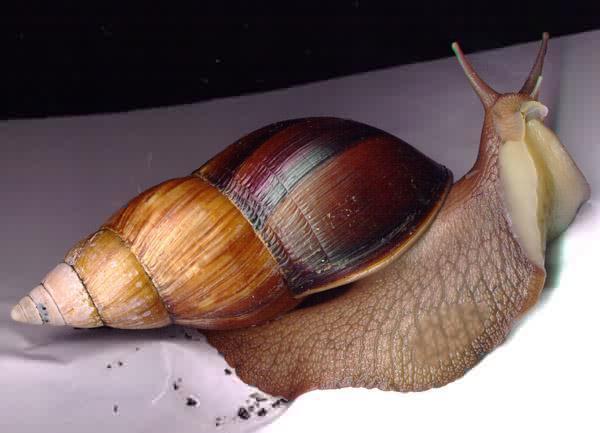
7. When pairing leech, performing the function of the male (leech - hermaphrodites, and can play the role of either sex), it clings to the body of the female and places the bag with the sperm on her skin. This bag highlights strong tissue destroying enzyme that eats a hole in her body and fertilize the eggs inside her.

8. Leeches belong to the class of animals. They are considered to be long-lived, because can live more than 20 years. Leeches can go without food for a long time - up to two (!) Years. After each meal they grow right before your eyes.
Leeches large chistyuli and live only in the cleanest waters of the planet, especially a lot of them in clean places. Unfortunately, due to air pollution leeches every code becomes less and less. In consequence, the leech brought in the Red Book and is now protected by law.
Those leeches that are bred in captivity, much worse treat various diseases unlike their counterparts leeches that live in the wild. Therefore, better use for the treatment of special wild leeches.
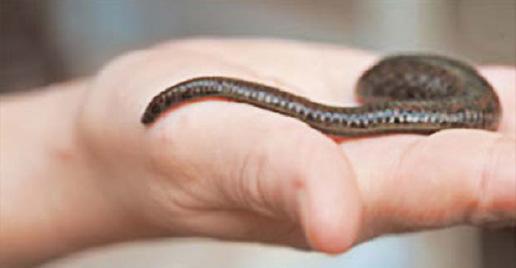
9. Breathing jellyfish is very different from human breathing, or even fish. There are no jellyfish lungs and gills, just like any other organ of respiration. The walls of its gelatinous body and tentacles are so thin that oxygen molecules freely cross the jelly-like "skin" directly into the internal organs. Thus, jellyfish breathing entire surface of the body.
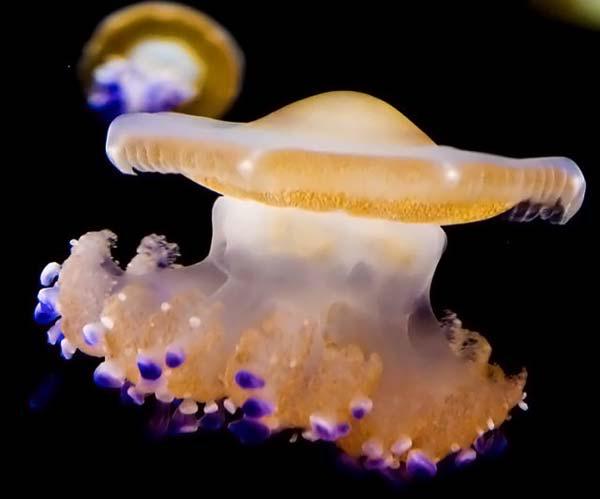
10. Farmers in the Caribbean use poison as a certain kind of jellyfish poison for rats.

11. Beautiful, but deadly Australian sea wasp (Chironex fleckeri) - the most poisonous jellyfish in the world. Since 1880 off the coast of Queensland from her poison heart paralytic action killed 66 people, in the absence of medical assistance to the victims died within 1-5 minutes. One of the most effective remedies are tights. Now, when riding on the surf lifeguards in Queensland wear tights sheer size
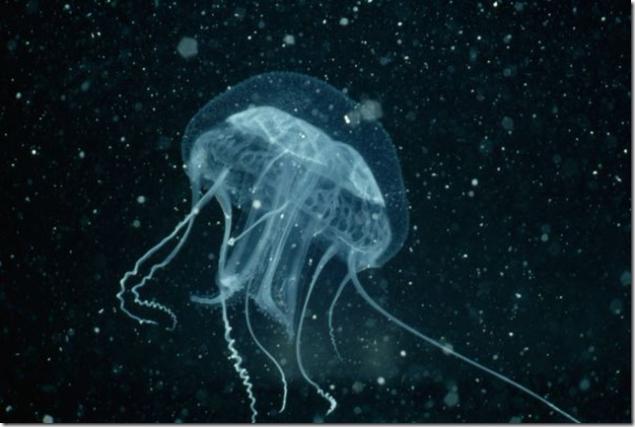
12. Off the coast of Japan, live crabs heykegani, pattern on the shell that resembles the face of an angry Samurai. According to the statement of science popularizer Carl Sagan, this kind of owes its appearance unintentional artificial selection. Many generations of Japanese fishermen catching these crabs were released back into the sea because they believed their rebirths killed in battle samurai. This increases the chances of fishermen heykegani to reproduce and increase in their number among the other crabs.
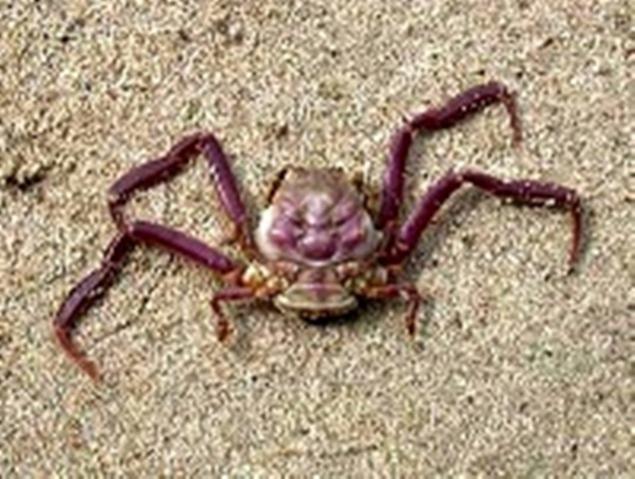
13. In the male fiddler crabs, one claw is substantially larger than the other. The name of these crabs got because females like to call themselves, moving this claw. The males of one species of fiddler crabs Uca mjobergi went on - if they lose big claws in a fight with another male, then let grow it even bigger, although much weaker. However, for females it kind of becomes greater, and the other males are afraid to engage in battle with the owner of a claw.

14. A new species of large squid was discovered by scientists in the Indian Ocean in 2009. The representatives of this species reach a length of 70 cm. They belong to the family Chiroteuthid - deep-sea squid with a long, narrow body.
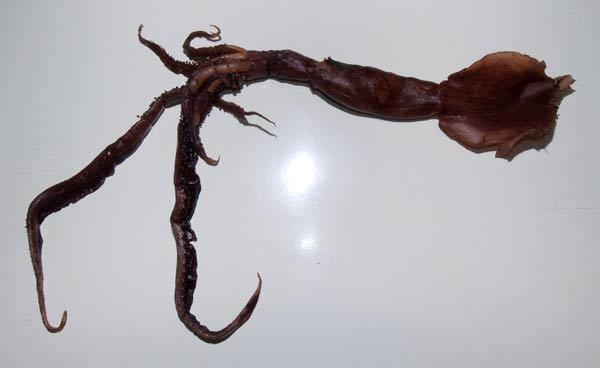
15. Deep tunicates - one of the most bizarre prehistoric animals. They are found when broken ice in the Antarctic. These meter worms are the first forms of life infesting the bottom of the Antarctic Ocean.

16. Barreleye Fish - fish eyes can rotate in all directions, as well as the head of the fish is transparent, it can also try to discern his mind, if any. (black dots on rtom- is not the eyes. glaza is green hemisphere in the head.)
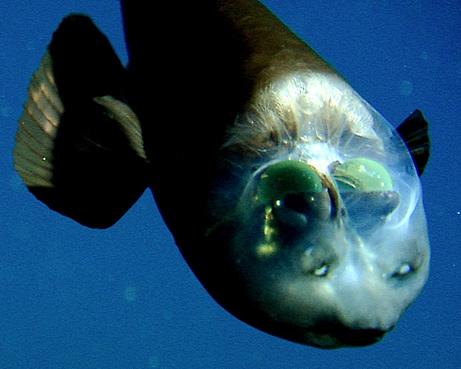
17. Fish-needle hunts a totally unique way: it is close to the victim, often hiding behind the other fish, and quickly sucks it in his long "beak". According to its characteristics the fish-needle very similar to the seahorse.
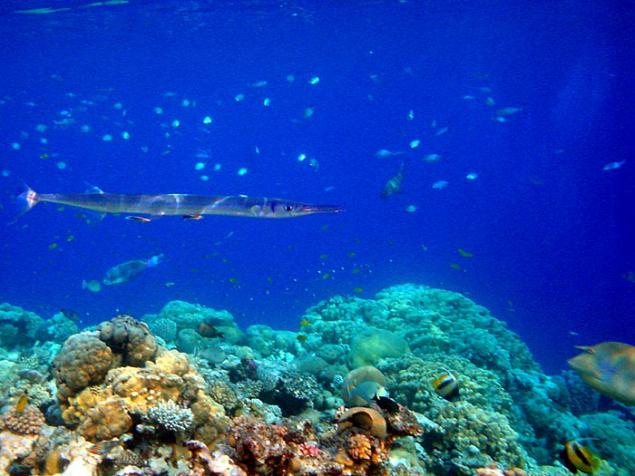
18. For centuries, scholars, beginning with the Greek philosopher Aristotle, trying to understand how acne multiplies. Today we know that it spawns in the Sargasso Sea, between Bermuda and the Caribbean. Small larvae on a journey of thousands of kilometers away to return to the river, where I came from their parents.
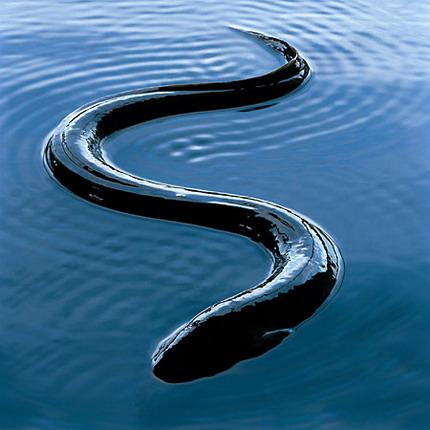
19. The electric organ is not only the rays. The body of an African river catfish malapterurusa wrapped like a fur coat, a gelatinous layer, in which an electric current is formed. The share of power account for about a quarter of the weight of all catfish. It reaches the discharge voltage of 360 V, it is dangerous even for the person and, of course, is fatal to the fish.

20. A variety of starfish called Lunckia columbiae can fully reproduce the body of the particle length of 1 centimeter.
Sources:
1001facts.info
etopijavki.ru
internevod.com
addfun.ru
amare-moscow.ru
muzey-factov.ru
Thank you for your attention
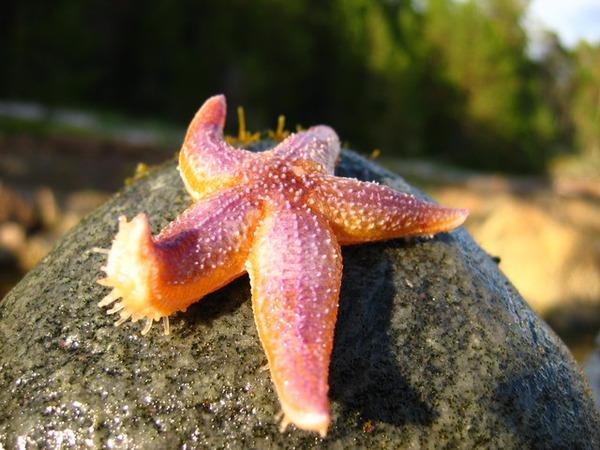
Source:
20 photos + text
1. lobsters do feel pain when they are thrown into boiling water. However, plunging them before cooking in salt water, you can give them anesthesia.

2. Starfish - the only animal that can turn your stomach inside out. When it approaches its prey (usually representatives of mollusks), the star of the stomach protrudes through the mouth and covering his victim's shell. Then slowly digests the fleshy part of his body outside the mollusk.

3. Newborn barnacle Balanus (barnacle) similar to the daphnia (water fleas). It is also called barnacles and sea tulip. In the next stage of development, it has three eyes and twelve feet. In the third stage of development, it has twenty-four feet and has an eye. Barnacles attach themselves to a solid object and remain there for life.

4. When the shellfish abalone feed on red algae, their shell becomes red.
Abalone 10 cm in length may be so hard to hold on to a stone that two strong men can not tear it.

5. Sea worms mate as follows: in the mating season males and females gather in a swarm. Suddenly they attack the females and the males bite their tails. The tailings contain sperm. If swallowed, it moves through the digestive tract and fertilize the female egg.

6. snails mate only once in their lifetime. Mating can last up to twelve hours.

7. When pairing leech, performing the function of the male (leech - hermaphrodites, and can play the role of either sex), it clings to the body of the female and places the bag with the sperm on her skin. This bag highlights strong tissue destroying enzyme that eats a hole in her body and fertilize the eggs inside her.

8. Leeches belong to the class of animals. They are considered to be long-lived, because can live more than 20 years. Leeches can go without food for a long time - up to two (!) Years. After each meal they grow right before your eyes.
Leeches large chistyuli and live only in the cleanest waters of the planet, especially a lot of them in clean places. Unfortunately, due to air pollution leeches every code becomes less and less. In consequence, the leech brought in the Red Book and is now protected by law.
Those leeches that are bred in captivity, much worse treat various diseases unlike their counterparts leeches that live in the wild. Therefore, better use for the treatment of special wild leeches.

9. Breathing jellyfish is very different from human breathing, or even fish. There are no jellyfish lungs and gills, just like any other organ of respiration. The walls of its gelatinous body and tentacles are so thin that oxygen molecules freely cross the jelly-like "skin" directly into the internal organs. Thus, jellyfish breathing entire surface of the body.

10. Farmers in the Caribbean use poison as a certain kind of jellyfish poison for rats.

11. Beautiful, but deadly Australian sea wasp (Chironex fleckeri) - the most poisonous jellyfish in the world. Since 1880 off the coast of Queensland from her poison heart paralytic action killed 66 people, in the absence of medical assistance to the victims died within 1-5 minutes. One of the most effective remedies are tights. Now, when riding on the surf lifeguards in Queensland wear tights sheer size

12. Off the coast of Japan, live crabs heykegani, pattern on the shell that resembles the face of an angry Samurai. According to the statement of science popularizer Carl Sagan, this kind of owes its appearance unintentional artificial selection. Many generations of Japanese fishermen catching these crabs were released back into the sea because they believed their rebirths killed in battle samurai. This increases the chances of fishermen heykegani to reproduce and increase in their number among the other crabs.

13. In the male fiddler crabs, one claw is substantially larger than the other. The name of these crabs got because females like to call themselves, moving this claw. The males of one species of fiddler crabs Uca mjobergi went on - if they lose big claws in a fight with another male, then let grow it even bigger, although much weaker. However, for females it kind of becomes greater, and the other males are afraid to engage in battle with the owner of a claw.

14. A new species of large squid was discovered by scientists in the Indian Ocean in 2009. The representatives of this species reach a length of 70 cm. They belong to the family Chiroteuthid - deep-sea squid with a long, narrow body.

15. Deep tunicates - one of the most bizarre prehistoric animals. They are found when broken ice in the Antarctic. These meter worms are the first forms of life infesting the bottom of the Antarctic Ocean.

16. Barreleye Fish - fish eyes can rotate in all directions, as well as the head of the fish is transparent, it can also try to discern his mind, if any. (black dots on rtom- is not the eyes. glaza is green hemisphere in the head.)

17. Fish-needle hunts a totally unique way: it is close to the victim, often hiding behind the other fish, and quickly sucks it in his long "beak". According to its characteristics the fish-needle very similar to the seahorse.

18. For centuries, scholars, beginning with the Greek philosopher Aristotle, trying to understand how acne multiplies. Today we know that it spawns in the Sargasso Sea, between Bermuda and the Caribbean. Small larvae on a journey of thousands of kilometers away to return to the river, where I came from their parents.

19. The electric organ is not only the rays. The body of an African river catfish malapterurusa wrapped like a fur coat, a gelatinous layer, in which an electric current is formed. The share of power account for about a quarter of the weight of all catfish. It reaches the discharge voltage of 360 V, it is dangerous even for the person and, of course, is fatal to the fish.

20. A variety of starfish called Lunckia columbiae can fully reproduce the body of the particle length of 1 centimeter.
Sources:
1001facts.info
etopijavki.ru
internevod.com
addfun.ru
amare-moscow.ru
muzey-factov.ru
Thank you for your attention

Source:
